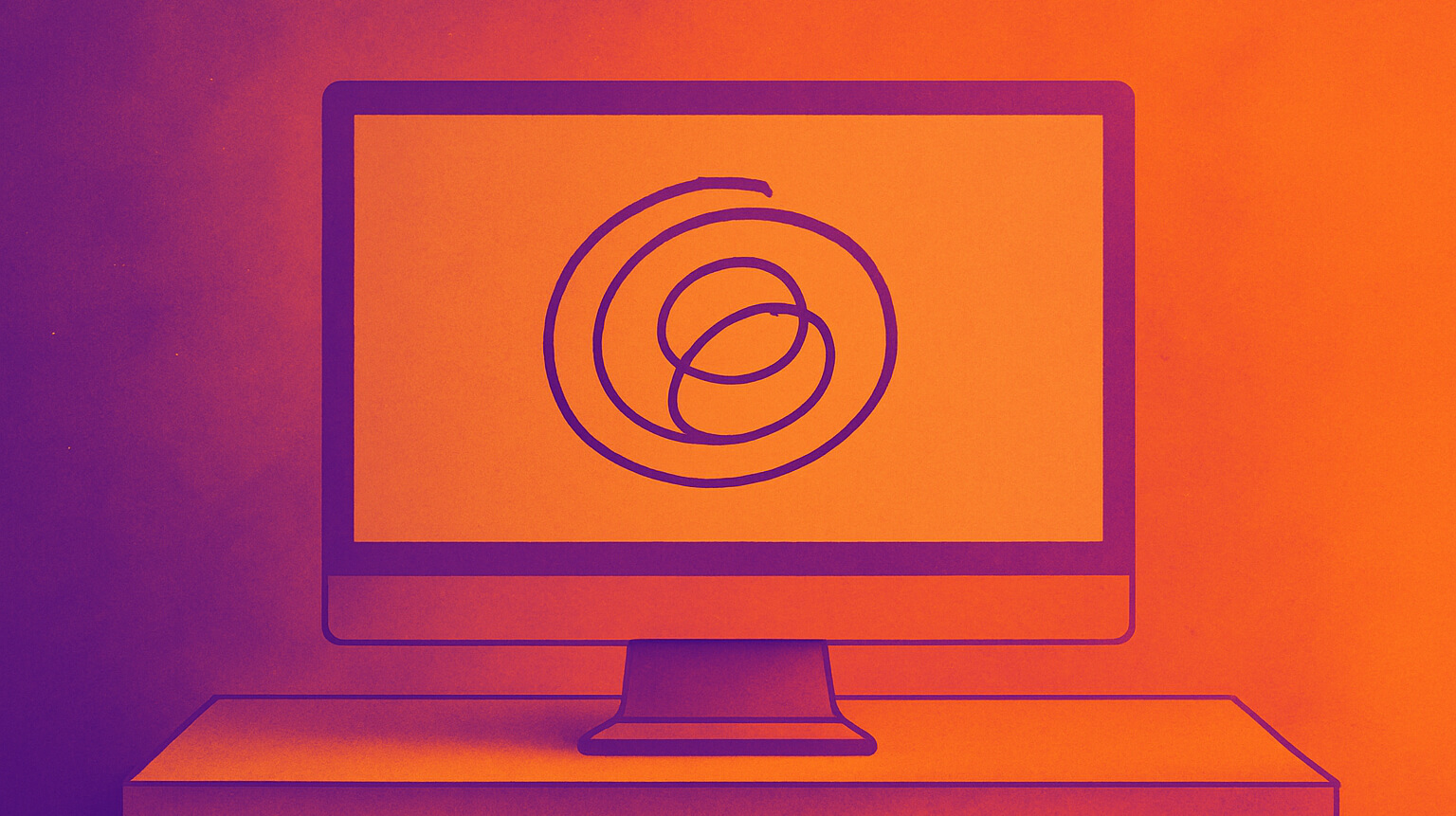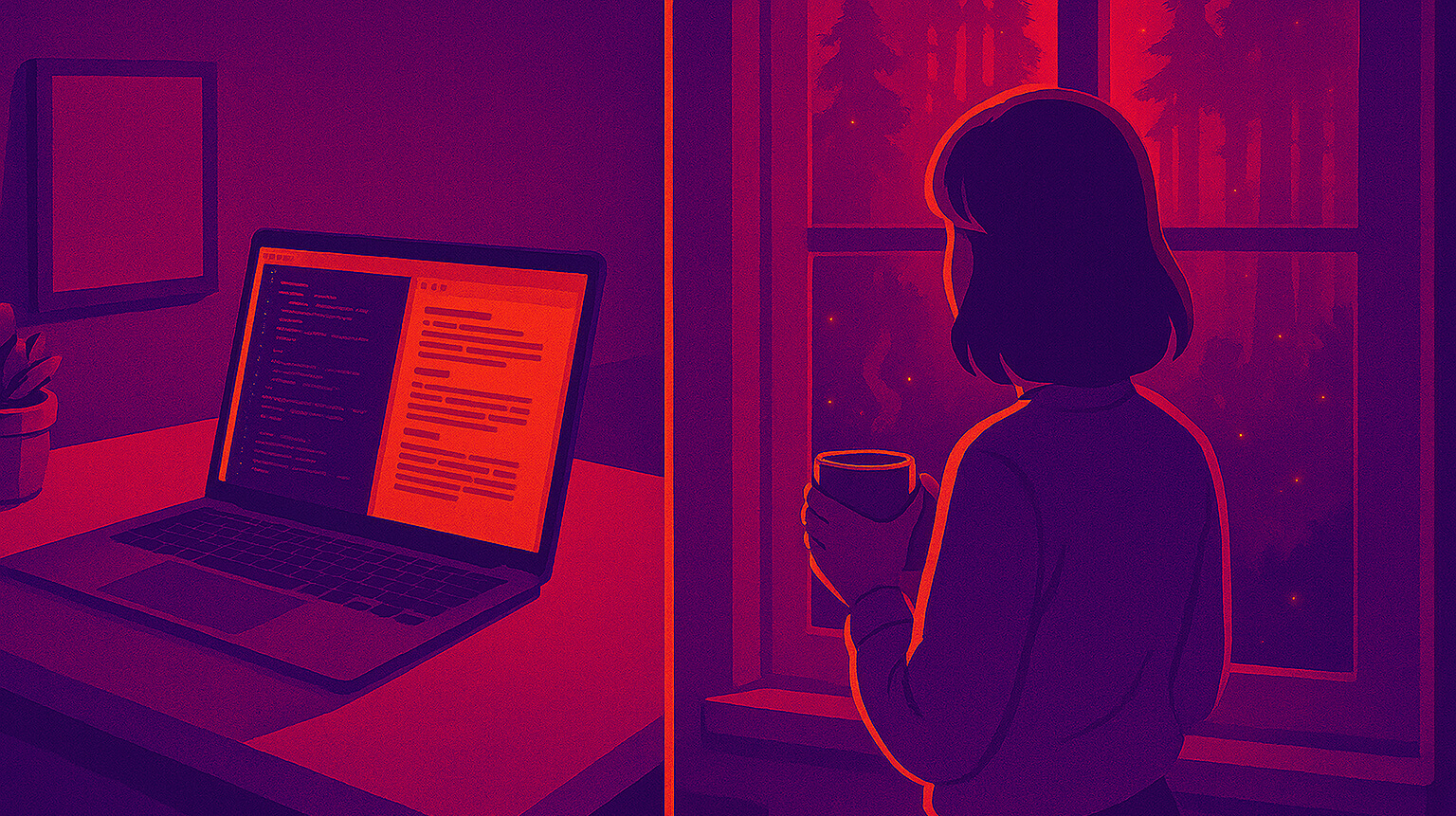Sarah, a marketing manager from Austin, thought she had it made when her company went fully remote in 2022. No commute, flexible schedule, better work-life balance. Then came the headaches.
By month three, she was leaving video calls early, squinting at spreadsheets, and ending workdays with burning, watery eyes. What Sarah didn't realize was that she'd become part of a growing epidemic: remote work eye strain affecting millions of workers worldwide, with consequences reaching far beyond individual discomfort.
Recent studies reveal a staggering reality: 43% of remote workers report worsening eye health, while remote employees now spend an average of 13 hours daily staring at screens—nearly double the 7 hours logged by their office counterparts. This isn't just a minor inconvenience; it's a productivity crisis costing companies billions.
| What you'll discover in this article | |
|---|---|
| The true cost of remote work eye strain | Why 43% of remote workers are suffering |
| The science behind screen-induced fatigue | What 13 hours of daily screen time does to your eyes |
| Evidence-based solutions that work | From ergonomic assessments to AI-powered tools |
| How companies can protect their workforce | ROI strategies for healthier remote teams |
The Numbers Don't Lie: Remote Work Is Breaking Our Eyes
When the 2024 VSP Vision Care and Workplace Intelligence study examined 1,600 participants across the United States, the findings were alarming. Remote and hybrid workers accumulate over 7 hours of screen time daily compared to just 5.5 hours for on-site employees. But the real shock comes from recent All About Vision research: remote workers average nearly 13 hours per day staring at screens, up from 7-10 hours pre-pandemic.
This explosion in screen time isn't just about work tasks. Remote workers are using multiple devices throughout the day—laptops for meetings, smartphones for communication, tablets for research, and often personal devices for entertainment after work. The boundaries between professional and personal screen use have completely dissolved.
The productivity toll is immediate and measurable. Among workers experiencing eye strain symptoms:
- 63% report decreased productivity
- 55% struggle with reduced ability to focus
- 42% experience negative impacts on mental health
- 43% have left work early due to vision problems
Dr. Kate Renwick-Espinosa, President of VSP Vision Care, emphasizes the broader implications: "In our increasingly digital world, it's important for employers today to view vision benefits as part of a holistic approach to health and preventive health care plans for employees."
Economic Impact by the Numbers:
- $268 billion: Global cost of uncorrected vision problems in 2024
- $16 billion: Annual productivity loss in China alone from vision issues
- 50%: Percentage of workers experiencing at least one eye-related issue
- 2.6x: Higher likelihood of myopia in urban vs. rural children (indicating environmental factors)
Why Remote Work Creates Perfect Storm Conditions for Eye Strain
Understanding why remote work decimates eye health requires examining the unique visual challenges that emerge when your bedroom becomes your boardroom. Unlike traditional office environments designed with ergonomics in mind, home workspaces often violate every principle of healthy vision.
The Ergonomic Disaster Zone Most remote workers operate from kitchen tables, couches, or makeshift desk setups that force awkward viewing angles. Research from Ghana shows 79.5% of home workstations demonstrate poor ergonomic practices, with 73.5% using incorrect screen angles and 99% working under suboptimal lighting conditions.
When your laptop sits too low, you crane your neck downward. When it's too high, you tilt your head back. Both positions strain the cervical spine while forcing your eyes to work overtime maintaining focus at unnatural angles. A study of bank employees revealed strikingly high prevalence rates for musculoskeletal symptoms: 79.1% experienced neck pain, 69.8% shoulder pain, and 82.7% back pain. Maintaining proper desk posture becomes even more critical in remote work environments.
The Blue Light Controversy While blue light from screens generates significant attention, the scientific community remains divided on its role in computer vision syndrome. Some research indicates prolonged blue LED exposure causes apoptosis and oxidative damage in corneal cells, potentially leading to ocular surface inflammation. Animal studies show retinal damage from intense blue light exposure, raising concerns about long-term effects.
However, the American Optometric Association doesn't consider blue light a primary CVS factor. The truth likely lies in the intersection: blue light may contribute to symptoms, but it's the combination of screen-related factors—glare, refresh rates, reduced contrast—alongside environmental and ergonomic influences that creates the perfect storm.
The Blink Rate Crisis Perhaps the most underestimated factor is how screens alter our natural blinking patterns. Normally, we blink about 15 times per minute to maintain a healthy tear film. During concentrated screen use, this rate drops by half. With remote workers spending 13 hours daily focused on displays, their eyes are essentially running a marathon without adequate hydration. This excessive screen time creates compounding effects that go beyond simple eye strain.
Digital Screen Visual Demands Computer screens present unique challenges absent from traditional reading materials:
- Imprecise letter clarity requiring constant micro-adjustments
- Reduced contrast ratios forcing eyes to work harder
- Reflections and problematic viewing distances
- Bright peripheral illumination creating visual conflicts
- Rapid transitions between light and dark elements
These demands become exponentially more taxing when sustained for 13 hours rather than 7, explaining why remote workers experience symptoms at rates far exceeding their office counterparts.
The Science of Screen-Induced Visual Fatigue
Computer vision syndrome operates like a repetitive stress injury for your eyes. Just as carpal tunnel syndrome develops from repetitive wrist motions, digital eye strain emerges from sustained visual focusing without adequate recovery time.
How Your Eyes Actually Work During Screen Time Every pixel adjustment, every line of text, every transition between browser tabs demands precise coordination between multiple eye muscle groups. The ciliary muscles control lens shape for focusing, while extraocular muscles manage eye movement and alignment. During extended screen sessions, these muscles work in overdrive without the natural variation that comes from looking at different distances throughout the day.
Research shows that visual fatigue develops gradually and requires longer recovery periods than the strain itself. If you experience symptoms after 4 hours of screen work, your eyes might need 6-8 hours of varied visual activity to fully recover. Remote workers rarely get this recovery time, creating a cumulative deficit.
The Accommodation-Convergence Connection When reading a book, your eyes naturally converge (turn inward) and accommodate (focus) at the same distance. Computer screens disrupt this relationship. Your eyes must converge on text at arm's length while accommodating to a slightly different distance due to screen depth and angle. This mismatch creates what researchers call vergence-accommodation conflict, leading to headaches, double vision, and general discomfort.
Individual Risk Factors That Amplify Remote Work Strain Certain workers face dramatically higher risks:
- Uncorrected vision problems: Even minor refractive errors become major issues during extended screen use
- Age-related changes: Adults over 40 develop presbyopia, making close-up work increasingly difficult
- Dry eye predisposition: Hormonal factors, certain medications, and environmental conditions worsen symptoms
- Previous eye surgeries: LASIK and other procedures can affect tear film stability
Gender Disparities in Remote Work Eye Strain Meta-analysis data reveals females exhibit 71.4% CVS prevalence compared to 61.8% for males. This disparity intensifies in remote work settings due to several factors:
- Hormonal fluctuations affecting tear production
- Higher likelihood of multitasking across multiple devices
- Eye cosmetics potentially destabilizing tear film
- Greater likelihood of working in improvised home office setups
What Actually Works: Evidence-Based Solutions for Remote Work Eye Health
After analyzing interventions across 45 randomized controlled trials involving 4,497 participants, researchers have identified which strategies actually reduce computer vision syndrome symptoms—and which popular remedies fall short.
The Disappointing Truth About Popular Solutions Before diving into what works, it's crucial to understand what doesn't. A comprehensive 2022 systematic review published in Ophthalmology found:
- Blue light-blocking glasses: No significant reduction in visual fatigue or dry eye symptoms
- Multifocal lenses: No improvement in visual fatigue scores compared to single-vision lenses
- Artificial tears: Very low certainty evidence for symptom relief
- Berry extracts and most supplements: No significant improvement in visual fatigue
These findings challenge widespread marketing claims and highlight the need for evidence-based approaches rather than trendy solutions.
Solutions That Actually Work
1. Ergonomic Workstation Assessment and Optimization Rather than guessing at proper setup, systematic ergonomic evaluation produces measurable results. A study of surgical residents showed that AI-based real-time ergonomic feedback improved posture scores and increased awareness of proper positioning.
Key positioning guidelines:
- Screen center 15-20 degrees below eye level (4-5 inches below straight-ahead gaze)
- Viewing distance: 20-28 inches from eyes
- Document placement above keyboard and below monitor
- Chair height allowing feet flat on floor with supported arms
2. Strategic Break Implementation Beyond 20-20-20 While the 20-20-20 rule receives widespread recommendation, research shows mixed results for this specific protocol. More effective approaches include:
- Supplementary workplace rest breaks: Studies show "some reduction in visual fatigue"
- Task variation: Alternating between digital and analog work activities
- Microbreak systems: 30-second breaks every 10 minutes prove more sustainable than longer intervals
3. Environmental Modifications That Make a Difference
- Lighting optimization: Position screens perpendicular to windows; use blinds to control glare
- Humidity control: Dry environments worsen symptoms, particularly in hot, sunny climates
- Air quality: Ensure adequate ventilation to reduce eye irritation
4. Medical Interventions for At-Risk Workers For workers with predisposing factors:
- Low-dose atropine eye drops: Reduce myopia progression by approximately 50%
- Prescription computer glasses: Intermediate focal length lenses balanced for screen distance
- Dry eye treatments: Omega-3 supplements show promise for tear film stability
Innovative Technology Solutions on the Horizon Emerging tools offer personalized interventions:
- Smart glasses with eye tracking: Monitor blink rates and provide real-time break reminders
- AI-powered ergonomic assessment: Real-time posture feedback and adjustment suggestions
- Wearable near-eye tracking: Continuous monitoring of eye strain indicators
The ROI of Protecting Remote Workers' Vision
Forward-thinking companies are discovering that investing in employee eye health generates substantial returns through reduced healthcare costs, decreased absenteeism, and improved productivity. The business case becomes compelling when you examine the true cost of ignoring the problem.
Calculating the Hidden Costs When 43% of remote workers leave early due to vision problems, the productivity impact extends beyond immediate task completion. Consider a software development team where three out of seven developers regularly experience afternoon eye strain. Those developers produce lower-quality code, require more debugging time, and may avoid complex visual tasks during peak symptom periods.
Research quantifies these impacts:
- 63% productivity decrease among workers with eye strain symptoms
- 55% reduction in focus ability affecting complex cognitive tasks
- 42% negative mental health impact increasing stress and turnover risk
Successful Company Interventions Organizations implementing comprehensive vision health programs report measurable improvements:
Ergonomic Equipment Provision Companies providing external monitors for remote workers see immediate benefits. Instead of hunching over 13-inch laptop screens for 13 hours daily, employees can maintain proper posture with appropriately sized displays positioned at optimal viewing angles.
Vision Care Benefit Enhancement Employers adopting Excepted Benefit Health Reimbursement Arrangements (EBHRAs) can reimburse up to $2,150 annually for vision care not covered by standard health plans. This covers computer glasses, dry eye treatments, and more frequent eye exams for high-risk workers.
Proactive Health Monitoring Some companies implement regular vision screenings for remote workers, particularly those spending more than 8 hours daily on screens. Early intervention prevents minor issues from becoming productivity-killing problems.
Technology-Enabled Solutions Organizations piloting AI-powered ergonomic assessment tools report improved employee awareness and voluntary compliance with healthy work practices. When workers receive real-time feedback about posture and break timing, they make adjustments that reduce strain without mandated policies.
Creating a Culture of Visual Health The most successful interventions combine practical support with cultural change. This includes:
- Management modeling healthy screen habits during meetings
- Encouraging camera-off periods during long video conferences
- Recognizing that visual fatigue affects cognitive performance
- Building break time into project timelines rather than treating it as lost productivity
Return on Investment Metrics Companies tracking ROI from vision health investments typically see:
- 15-25% reduction in health insurance claims related to headaches and eye strain
- 10-20% decrease in sick days among high screen-time workers
- Improved employee satisfaction scores in health and wellness categories
- Reduced turnover among workers who previously struggled with visual comfort
The key insight: treating remote work eye strain as a business priority rather than an individual health issue transforms both employee wellbeing and organizational performance. When companies view vision care as infrastructure—like providing laptops and internet connectivity—they create competitive advantages in attracting and retaining remote talent.
The Path Forward for Remote Work Eye Health
As remote work evolves from pandemic necessity to permanent workplace fixture, addressing the eye strain epidemic becomes crucial for sustainable productivity. The evidence is clear: current approaches aren't sufficient, but targeted interventions can dramatically improve outcomes.
The solution isn't eliminating screens—that's neither practical nor necessary. Instead, it's about creating work environments that support human visual physiology, whether that's a kitchen table in Kansas or a co-working space in California.
Immediate Actions for Remote Workers:
- Conduct an honest ergonomic assessment of your workspace
- Schedule a comprehensive eye exam focusing on computer-related visual demands
- Implement strategic breaks using apps like LookAway to automate the process
- Track your daily screen time to understand the actual scope of exposure
For Employers:
- Audit remote work setups through virtual ergonomic assessments
- Enhance vision benefits to cover computer-specific eyewear and treatments
- Provide external monitors and ergonomic equipment as standard remote work infrastructure
- Create policies that normalize visual health breaks rather than treating them as productivity losses
The future of remote work depends on solving the eye strain epidemic before it becomes an even larger crisis. With 5 billion people projected to be myopic by 2050, and remote work screen time continuing to increase, the window for prevention is narrowing.
But the tools exist. The research is clear. What's needed now is the collective will to treat visual health as seriously as we treat cybersecurity or data backup—as essential infrastructure for sustainable remote work.
References
- VSP Vision Care & Workplace Intelligence. (2024). 2024 Workplace Vision Health Report.
- All About Vision. (2024). Has WFH changed the way we see?
- Singh S, McGuinness MB, Anderson AJ, et al. (2022). Interventions for the management of computer vision syndrome: A systematic review and meta-analysis. Ophthalmology, 129(10):1192-1215.
- Ccami-Bernal F, Soriano-Moreno DR, Romero-Robles MA, et al. (2024). Prevalence of computer vision syndrome: A systematic review and meta-analysis. J Optom, 17(1):100482.
- León-Figueroa DA, Barboza JJ, Siddiq A, et al. (2024). Prevalence of computer vision syndrome during the COVID-19 pandemic: a systematic review and meta-analysis. BMC Public Health, 24(1):640.
- American Optometric Association. Computer Vision Syndrome.



